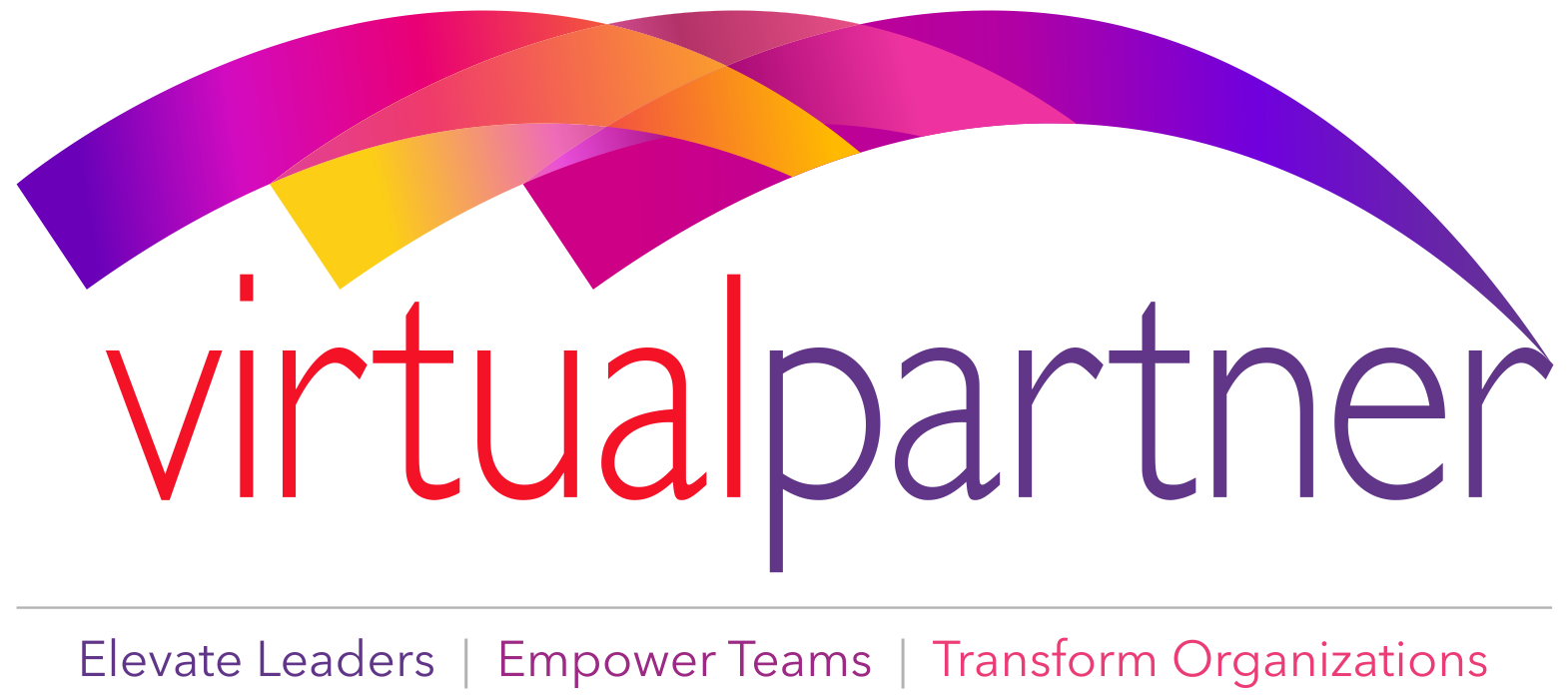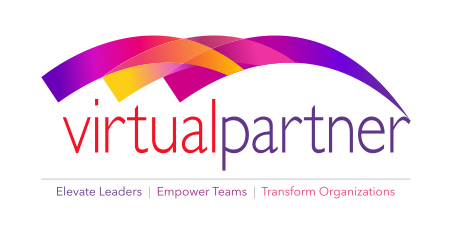AI in Action: An Adoption Primer for The Middle Market Executive Team

AI is here to stay. Strap in, and get ready! “Just like Cloud adoption wasn’t an if, but when, AI adoption is now the new key to staying ahead” — Tysha Tolbert, CEO/Founder, pondHR
Artificial Intelligence is no longer a futuristic concept. It’s reshaping industries and economies. For middle-market leaders, embracing AI isn’t an option; it’s a strategic imperative.
Picture the scene: Everyone in the meeting is asking “AI” for the answers, most of which are correct. The meeting bot enters the Zoom room and starts recording the conversation, with the human element of “intent” couched into the explanation in the post-meeting notes.
So, is your organization now embracing AI?
Not so fast. The digital transformation era is giving way to a new reality: AI-driven transformation. It’s not just about the tools. Business models and operational norms need to transform as well. Why does this matter?
As more research in AI emerges, the market indicates that AI has become a “General-Purpose Technology.” Beyond that, AI isn’t merely a technology; it’s a catalyst for business growth, innovation, and competitive advantage. Organizations that harness its power will thrive in the years to come.
For example, Panera Bread wanted to improve its drive-thru experience and reduce wait times.
The company implemented an AI-powered system that predicts order times and optimizes kitchen operations. Their results?Panera Bread saw a significant reduction in drive-thru wait times, leading to increased customer satisfaction and sales.
Increased revenue is an excellent metric! But what should you consider when leading the adoption of AI in your company? This article provides insights, leadership imperatives, and a readiness checklist.
Is Your Organization Ready?
Let’s dive in with a few thought starters that organizations and their executive teams should be focused on to drive adoption:
How do we prepare our leadership and organization for this AI shift?
Cultural readiness isn’t a buzzword, and saying your organizational culture is primed for AI is one thing, but if we surveyed your staff and assessed five key areas, how would they do? Is your organization open to new ideas, experimentation, and continuous learning? Here are a few indicators leaders should look at:
Team Cohesiveness
Do you have a vulnerability-based trust, productive conflict, commitment, and accountability environment? These behaviors indicate whether or not your culture supports new ideas or if you have a fear-based, siloed organization, which can be a petri dish for disaster. CWC often helps organizations’ ‘pre-game’ to strengthen cultural agility before a significant AI investment. Companies can use organizational assessments to create a stronger foundation to ensure an agile environment, excited for a new norm to take shape.
Talent Development
Do you have the necessary data science, machine learning, and AI engineering expertise?
Here’s where this gets tricky. Big data has morphed into a field with cloud tech gurus like Amazon, Google’s Hadoop, and Snowflake redefining the rules of a game that has yet to be played. Your team can’t just be great at data analytics; they need expertise that evolves with the industry. You need a mix of technical, analytical, organizational architecture, and curiosity to innovate. It’s not just the young or the next generation; you need a blended workforce to balance the tech with the right business questions and expertise to know when to question the story the data is telling.
Infrastructure Assessment
Implementing AI in middle-market organizations requires a strategic approach that begins with the right infrastructure investments. First, ensure your technology stack is robust, with scalable cloud solutions, secure data storage, and powerful computing capabilities to handle AI workloads.
Next, invest in human capital by upskilling your team, focusing on data literacy, AI competencies, and change management to prepare them for AI integration.
Additionally, establish partnerships with AI vendors and consultants who understand your industry and can provide tailored solutions and ongoing support. By laying this foundation, you position your organization to leverage AI effectively, driving innovation and growth.
Cross-Functional Collaboration
Equally crucial to a successful AI implementation is fostering cross-functional collaboration within your organization. AI initiatives often touch multiple departments, from IT and data science to operations and marketing. To maximize the value of AI, these teams must work together seamlessly, breaking down silos and sharing insights across the organization.
Encourage a culture of collaboration where different functions contribute their unique perspectives to AI projects, ensuring that solutions are comprehensive and aligned with business objectives. Regular communication, joint training sessions, and cross-departmental task forces can help create a unified approach, driving AI adoption that benefits the entire organization.
Democratization of AI
Empowering employees across the organization to understand and utilize AI tools can lead to more innovative solutions. How do you cascade the AI imperative to employees so they can leverage it to solve complex problems, improve efficiency, and build bench strength?
- Embed the organization’s leadership commitment to embracing AI as a strategic imperative tied to the strategic plan.
- Ensure the organization’s AI ambition has clearly developed its “Opportunity Radar” and connected its future action to measurable outcomes (customers, operations, and human capital).
- The entire organization should meaningfully translate these goals into the performance system and cascade them from the top down and across.
- Training and education should provide comprehensive opportunities to equip employees with the skills and knowledge needed to work effectively with AI.
- Mentorship and coaching structures should be built by assigning experienced AI professionals to mentor and guide employees in their AI journey.
- Incentives and recognition focused on rewarding employees for successful AI projects and contributions to foster a culture of innovation.
Is Your Data Ready?
Before diving into AI, assessing whether your data is truly ready to support advanced technologies like Machine Learning (ML) and Generative AI (GAI) is crucial. For middle-market executives, this means scrutinizing data quality and governance practices to ensure their data is accurate, consistent, and secure.
Conducting a data maturity assessment is essential to understand where your organization stands and what gaps need to be filled. Creating seamless connectivity between your data and AI technologies is vital, but equally important is your team’s ability to synergize their skills, understand the data deeply, and ask the right questions to extract actionable insights. Involving industry experts in this process ensures that your AI initiatives are grounded in real-world relevance, helping you turn data into a strategic asset that drives business success.
What is the role of data, and how mature does our organization need to be to start?
Data Quality and Governance: Ensure data is accurate, complete, and accessible. Implement robust data governance practices to protect sensitive information.
Data Maturity Assessment: Evaluate your organization’s current data maturity level and identify areas for improvement.
Connecting ML, GAI, and industry experts on your team:
- Synergy of Skills: ML and GAI can be powerful tools for solving complex problems. Industry experts can provide domain-specific knowledge to guide AI development and ensure that solutions are relevant and effective.
- Understand Data: All leaders need to grasp the four Vs of data: Volume, Variety, Velocity, and Veracity. Big data and its core concepts must become the universal language of leaders.
- Ask the Right Questions: Leverage data to drive informed decision-making. The questions should challenge the data to lead to better outcomes and more refined data.
- Involve Industry Experts: Their insights are crucial for effective AI implementation.
Are Your Leaders Ready?
You can’t do this alone. A highly engaged and capable leadership team will help you delve into these questions and ensure you have the proper foundation to bring AI adoption and transformation over the finish line.
Leadership Imperatives
- Foster a Culture of Innovation: Encourage experimentation, risk-taking, and continuous learning.
- Bridge the Gap Between Policy, Strategy, and Practice: Create a clear AI strategy, establish guidelines, and implement best practices.
- Enable Organizational Adoption: Overcome barriers by providing training and creating a collaborative environment supported by a change management framework and agile principles.
- Allocate Resources Wisely: Prioritize investments, measure success, and consider external partnerships.
- Create New Roles: Explore the potential benefits of a Chief AI Officer, AI Ethics Officer, Chief Data Architect, Data Governance Leader, and Data Science Lead. Select the roles appropriate to your organization.
Tysha Tolbert asserts that, in her experience, “adopting AI isn’t just about keeping up with the competition; it’s about leading with innovation and making data-driven decisions that can propel an organization forward. So by embracing AI, executives can unlock new levels of productivity, creativity, and resilience within their team”.
AI Readiness Checklist – How Ready Are You?
Leadership Commitment
- Clear Vision: Has the executive team articulated a vision for AI adoption aligning with business goals?
- Cultural Readiness: Does the organizational culture support innovation, experimentation, and risk-taking?
- Talent Development: Are there plans to develop or acquire the necessary AI skills within the organization?
Strategy and Policy
- AI Strategy: Does the organization have a well-defined AI strategy that outlines goals, objectives, and critical initiatives?
- Ethical Guidelines: Are there established ethical guidelines for AI use, including data privacy, bias, and transparency?
- Risk Assessment: Has the organization assessed potential risks and challenges associated with AI implementation?
Data Infrastructure
- Data Quality: Is the organization’s data of sufficient quality, accuracy, and completeness to support AI applications?
- Data Governance: Are there robust policies and procedures to ensure data security and integrity?
- Data Analytics Capabilities: Does the organization have the necessary data analytics tools and expertise to extract insights from data?
Talent and Skills
- AI Expertise: Does the organization have the necessary AI expertise, including data scientists, machine learning engineers, and AI architects?
- Upskilling and Reskilling: Are there plans to upskill or reskill existing employees to meet AI-related skill requirements?
- Talent Acquisition: Does the organization have a strategy for attracting and retaining top AI talent?
Technology and Infrastructure
- AI Tools and Platforms: Does the organization have access to appropriate AI tools and platforms that align with its needs?
- IT Infrastructure: Is the organization’s IT infrastructure capable of supporting AI workloads, including cloud computing, big data analytics, and machine learning?
- Scalability: Can the organization’s technology infrastructure scale to accommodate growing AI needs?
Organizational Readiness
- Cross-Functional Collaboration: Are there mechanisms for effective cross-functional collaboration between departments involved in AI initiatives?
- Change Management: Does the organization have a plan for managing organizational change associated with AI adoption?
- Measurement and Evaluation: Are there metrics and KPIs in place to measure the success of AI initiatives and track progress?
Taking The Leap
Start with learning what mistakes to avoid. “The biggest mistake is believing data is important without thinking about the problem you need to solve.” Chris Childs, Snowflake
Regardless of your level of readiness, engage your organization and executive team in identifying game-changing problems and creating a roadmap for AI.
AI offers immense potential for middle-market leaders. By following these guidelines and addressing key considerations, you can successfully navigate the AI landscape and unlock its value.
The primer has been set. Are you ready to Dive In? Schedule an AI Organizational Adoption Readiness call with our team to get started.
In a previous article written by CWC Founder Tammy Alvarez, we discussed several themes for middle market leaders, including insights on data, bias, transparency, fairness, testing partnerships, privacy, job displacement, legal and intellectual property, compliance, goal setting, strategic planning, competitive advantages, operational efficiency, the customer journey, ethics, and continuous learning. If you missed “Embracing AI: A Comprehensive Guide for Middle Market Leaders,” you’ll want to review it here.

